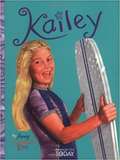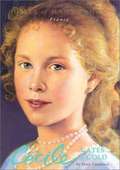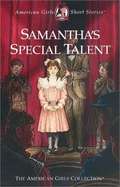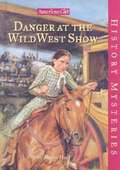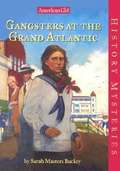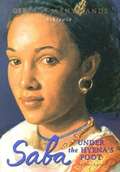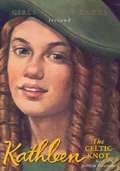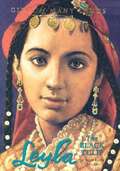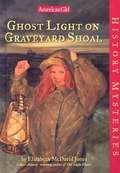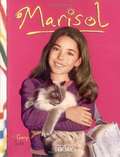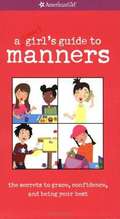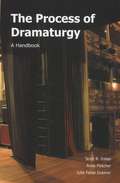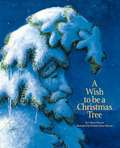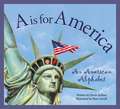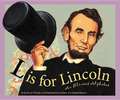- Table View
- List View
Kailey (American Girl Today)
by Amy Goldman KossWhether she's swimming in the waves or splash-crashin on her surf board, there's no place ten-year-old Kailey loves more than the ocean. She and her best friend, Tess, feel totally lucky when they find out a resort-mall-movie multiplex is "Coming Soon!" to their beach. TWELVE movie theaters. Cool shops. Maybe even bathrooms! Then Kailey learns the whole truth: developers plan to haul away the rocky tide pools to make a smooth, sandy beach for tourists. Messing with a whole tide-pool universe is just plain NOT OK. Kailey's got a great idea, but she's never tried anything like it before. If she can believe in herself and make it work, there might be hope for the tide pools yet.
Cecile: Gates of Gold (Girls of Many Lands)
by Mary CasanovaIn 1711, twelve-year-old Cecile Revel unexpectedly gets the chance to serve Louis XIV's sister-in-law at the palace of Versailles, but instead of a dream come true, life at court proves to be complicated and precarious.
Doll Hair Styling Tips and Tricks for Your Doll
by The Doll Hair Editors at Pleasant CompanyFrom tiny ponytails to bitty braids, discover fun and fancy hairstyles to try on your dolls! Step-by-step instructions and hair care tips make learning a breeze!
Samantha's Special Talent (American Girl Short Stories #30)
by Sarah Masters BuckeySamantha organizes a talent show to raise money to fix the library's leaky roof. Although she doesn't perform in the show, when the curtains close, she realizes just what her special talent is.
Danger at the Wild West Show (American Girl History Mysteries #19)
by Alison HartTwelve-year-old Rose sets out to prove her brother's innocence when he is accused of shooting a politician during a Wild West show performance in Louisville, Kentucky, in 1886.
Gangsters at the Grand Atlantic (American Girl History Mysteries #20)
by Sarah Masters BuckeyIt's 1925. Thanks to Prohibition, bootleg liquor is big business, and organized crime is thriving. As summer vacation begins, twelve-year-old Emily Scott witnesses a gangland attack on her landlord, who runs a grocery downstairs from her family's Philadelphia flat. Emily is badly frightened by the violence and the thugs' warnings to keep quiet about it. So she jumps at the chance to accompany her sister Dorothy to the Jersey shore, where they'll be guests of Dorothy's wealthy college friend, Bitsy.
Saba: Under the Hyena’s Foot
by Jane KurtzAfter being kidnapped and brought to the emperor's palace in Gondar, Ethiopia, twelve-year-old Saba discovers that she and her brother are part of the emperor's desperate attempt to consolidate political power in 1846.
Kathleen: The Celtic Knot (Girls of Many Lands)
by Siobhan Parkinson"It's like flying!" twelve-year-old Kathleen Murphy decides after her very first Irish dancing lesson. But times are tough in Dublin and her da's hardly working, so there's no money to spare for lessons, much less a fancy dancing costume to compete in. Then, when one unexpected thing leads to another, Kathleen realizes that even when dreams change, the future holds possibilities she has never before imagined.
Leyla: The Black Tulip (Girls Of Many Lands)
by Alev Lytle CroutierTrying to help her financially destitute family, twelve-year-old Leyla ends up on a slave ship bound for Istanbul, then in the beautiful Topkapi Palace, where she discovers that life in the sheltered world of the palace harem follows its rigid rules.
Ghost Light on Graveyard Shoal (American Girl History Mysteries #21)
by Elizabeth Mcdavid JonesIn the late nineteenth century, twelve-year-old Rhoda investigates her suspicion that a wrecker may be luring ships to their destruction on the Virginia barrier island where her father is Keeper of a U.S. Lifesaving Station. Includes historical notes on the United States Life-Saving Service.
Marisol (American Girl Today)
by Gary SotoMeet Marisol, a girl who was born to dance, The upsetting news that her family is moving to the Chicago suburbs is made worse when Marisol learns that her new neighborhood doesn't have a dance studio. That means no tap, no jazz, no folklorico - not even classical ballet. Instead of giving up, resourceful Marisol is determined to find a way to keep dancing. With the help of two new friends, she figures out how to combine the best of her old world with a renewed commitment to stretch and try her hardest.
A Smart Girl's Guide to Manners: The Secrets to Grace, Confidence, and Being Your Best
by Nancy HolyokeWith this comprehensive manners guide, girls learn proper etiquette for everyday events and tricky social situations. The book is filled with great advice on everything from eating in fancy restaurants and handling troublemakers at parties to regaining composure after embarrassing accidents.
The Secret of Pirate Key
by Kathleen Culligan TechlerAdria Miller is spending a couple of weeks on Pirate Key before moving to St. Petersburg, Florida from her home in Minnesota. She and her cousin Toby look for buried treasure.
The Process of Dramaturgy: A Handbook
by Scott R. IrelanThis text offers a series of workable strategies and practical exercises meant to develop and improve the skills needed during the practice of production dramaturgy. Includes case studies, sample syllabus, list of resources.
A Wish To Be a Christmas Tree
by Colleen MonroeFeeling sad because no one chooses it as a Christmas tree, a bedraggled forest pine discovers the importance of being appreciated all year long. A Wish to be a Christmas Tree has become a holiday favorite of children and adults alike. When a towering evergreen realizes he is much too big to ever be chosen as a family's Christmas tree he is heartbroken. But his forest friends remind him what a gift he is to them every day of the year. The story captures the true spirit of the holiday--and has been capturing the imagination of readers since its publication. Fans include Katie Couric, who read the book on the Today show's Christmas day airing, and Mitch Albom (author of The First Phone Call from Heaven). who narrated an animated special of A Wish to be a Christmas Tree for PBS. Pictures are described.
B Is for Buckeye: An Ohio Alphabet
by Marcia ShonbergEven if you've never been to Ohio, you'll want to read this book. Here is a unique, clear and fascinating tour of Ohio for readers from the very young to the most seasoned. It touches on interesting facts about subjects in Ohio in the past and present that start with the letters A to Z. Each letter is followed by a short, rhyming poem that makes the fact easy to remember. There are also one or more brief descriptions of a feature of Ohio starting with each letter like the Underground Railroad for U, the four zoos in Ohio for Z, Ohio's state wildflower, the lake daisy for d and an accounting of Ohio's eight United States presidents for P. The facts are fun and fast. At the end of the book there are twenty questions about Ohio with their answers appearing on the next page. Try answering the questions and find out how much you have learned by reading B is for Buckeye, the Ohio alphabet. When you finish B is for Buckeye, you'll want to start over and read it again. Then, check the Bookshare collection to find more alphabet books in this series about other states.
B Is for Buckeye: An Ohio Alphabet
by Marcia SchonbergOhio is called "The Mother of Presidents" for the eight United States Presidents born there and 23 astronauts - the most of any state - are from Ohio. These and more amazing facts are revealed in B is for Buckeye.
S Is For Sunshine: A Florida Alphabet
by Carol Crane Michael MonroeThe Sunshine State gets its own alphabet book! Florida, where "B is for Beaches, P is for Pirates, and V is for Vacationers," comes to life with playful, vivid illustrations by Michael Monroe and a conch shell full of fun facts and poems by Florida author and educator Carol Crane. Do you know which city is the state capitol? Which fragrant blossom is the state flower? Learn all this and more with "S is for Sunshine: A Florida Alphabet."
A Is for America: An American Alphabet
by Devin ScillianFrom the British and our Constitution that replaced their rule, to Yellowstone and Zane Grey's stories of the west, A is for America is a sweeping tribute to all we know and love about our country. Other alphabet books filled with fun facts include: B is for Buckeye: An Ohio Alphabet, L is for Lincoln: An Illinois Alphabet, L is for Lobster: A Maine Alphabet, M is for Maple: A Canadian Alphabet, M is for Mitten: A Michigan Alphabet, S is for Sunshine: A Florida Alphabet, and V is for Volunteer: A Tennessee Alphabet. More states coming soon! It is indeed important, how America came to be. It's the idea that an individual can insist on being free. And I is for immigration and the immigrants who came from Italy, Ireland or India, we're Americans all the same. With delightful poems that beg to be read aloud, and expository text to broaden reader's reader's horizons, this American alphabet will make you fall in love with the United States over and over again. The letter X should remind us of the importance of election day, when all Americans rich and poor are allowed to have their say. Some were told they couldn't vote if they couldn't write their name. So they signed the ballot with a letter X and it counted just the same. Bright, beautifully detailed illustrations from California artist Pam Carroll bring each letter to vibrant life, from eagles and Thomas Edison to the veterans of two world wars. Celebrate all that is Americana with A is for America: An American Alphabet.
A Is for America: An American Alphabet
by Devin ScillianThe author of the charming fable "Fibblestax" includes a rhyming poem for each letter of the alphabet and informational text about the United States.
L Is for Lincoln: An Illinois Alphabet
by Kathy-Jo WarginThe home of one of America's most revered presidents is also home to American icons such as the Ferris wheel and John Deere tractors. But even a lifelong "Illini" might not know the full story behind the Tully Monster, The Northern Corss, or Old Quincy. Children, teachers, and parents-- from cities to farmlands-- will enjoy the clever poems, rich illustrations, and revealing text in "L is for Lincoln."
L Is for Lonestar: A Texas Alphabet
by Carol CraneThe letters of the alphabet are represented by words, set in short rhymes with additional information, relating to the state of Texas.
L Is For Lonestar: A Texas Alphabet (Discover America State By State Ser.)
by Carol Crane Alan StacyThere are enough special people, wildlife, and natural wonders in the Lone Star State to fill several alphabet books, and Sleeping Bear Press has picked out the finest to represent Texas in "L is for Lone Star: A Texas Alphabet." Author Carol Crane has worked for twenty-five years reviewing, lecturing and enjoying children's literature. She is a respected national educational presenter, speaking at state and regional reading conventions across the United States. As a historian, Carol loves to read all historical markers. She is still stopping and reading them across Texas. Illustrator Alan Stacy is a self-taught artist, but his first practical art lessons came at age 6 from his mother, Jeanne, who is a fine artist. His father Fearl, an Air Force pilot and officer, took the family to Germany, Virginia, Alaska and New Mexico before settling in Texas in 1975. The time they spent outdoors siteseeing, camping and hiking in the American West and Pacific Northwest instilled within Alan a profound love of animals and nature, which is reflected in his art. With poems to engage younger readers and text to give further details for older students, "Lone Star" is a fantastic tool for sharing Texan pride with the ones you love. So lasso a copy of "L is for Lone Star" and get ready for a very special ride through the alphabet!
L Is for Last Frontier: An Alaska Alphabet
by Carol Crane Michael Glenn MonroeUnrivaled by any other state for sheer size, Alaska is a land of mystery and wonder to many Americans. Bordered by water on three sides, it remains a remote and last frontier. . . until now. L is for Last Frontier, an alphabet book written by Carol Crane, takes readers on an informative adventure through the "land of the midnight sun."
L Is for Lobster: A Maine Alphabet
by Cynthia Furlong Reynolds"L Is for Lobster" is an alphabet book that captures the beauty, history and uniqueness of America's vacation land... Maine. Each letter contains a rhyming verse along with fun and educational facts.
